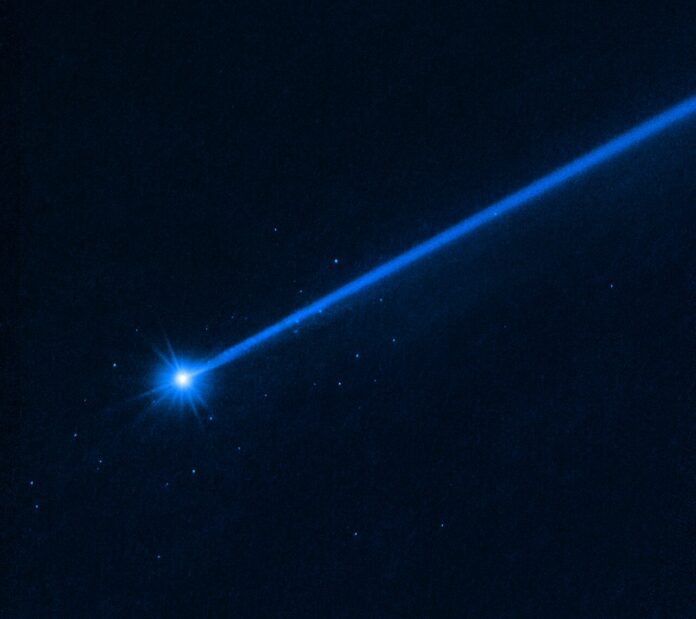
Astronomers using the extreme sensitivity of the Hubble Space Telescope have discovered a swarm of boulders that were likely shaken off the asteroid Dimorphos when NASA deliberately slammed the half-ton DART impactor into Dimorphos at about 22,500 kilometers per hour.
DART intentionally impacted Dimorphos on September 26, 2022, slightly altering the trajectory of its orbit around the larger asteroid Didymos.
According to Hubble photometry, the 37 ejected boulders range in size from 1 to 6.7 meters. They are moving away from the asteroid at a speed of about one kilometer per hour. The total mass in these detected boulders is approximately 0.1% of the mass of Dimorphos. The boulders are among the faintest objects in the solar system that have ever been photographed.
This opens up a new dimension for studying the implications of the DART experiment using the European Space Agency’s upcoming Hera mission, due to be launched in 2024. The spacecraft will perform a detailed study of the target asteroid Dimorphos after impact. “Hera will turn a large-scale experiment into a well-understood and repeatable planetary defense technique that can one day be used in practice.
Dimorphos blocks
These blocks are most likely not fragments of a miniature asteroid caused by an impact. They were already scattered across the asteroid’s surface, as seen in the last close-up image taken by the DART spacecraft just two seconds before impact, when it was only 11 kilometers above the surface.
The scientific team that observed these boulders with the Hubble telescope estimated that two percent of the boulders were shaken off the asteroid’s surface as a result of the impact. While Hubble’s observations of the boulders also provide an estimate of the size of the DART impact crater, Hera will ultimately determine the actual size of the crater.

The nature of Dimorphos
Long ago, Dimorphos could have formed from material ejected into space by the larger asteroid Didymos. Among other scenarios, the parent body could have spun up too fast or lost material after a sharp collision with another object. The ejected material formed a ring that gravitationally merged to form Dimorphos.
This would have turned it into a flying pile of rocky debris that is loosely held together by the relatively weak force of gravity. Therefore, the asteroid may not be solid, but have a structure more like a bunch of grapes.
It is unclear how the boulders were lifted from the asteroid’s surface. They could have been part of the ejection that was photographed by Hubble and other observatories. Or the seismic wave from the impact could have cracked the asteroid – like hitting a bell with a hammer – loosening the surface debris.
The DART and LICIACube (Light Italian CubeSat for Imaging of Asteroids) teams also studied boulders detected in images taken by the LICIACube LUKE (LICIACube Unit Key Explorer) camera in the minutes immediately after the DART kinetic impact.








